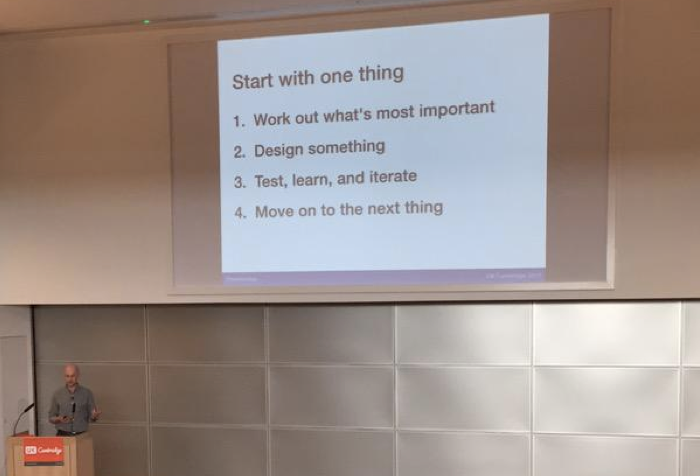Start with one thing
Design is about knowing what’s most important

Start with one thing is a design approach I really like. It makes you focus on what’s really important. I’m all for doing less and getting design out of people’s way.
I believe that the most successful products really only do one thing. Everything else is secondary to this. It’s the difference between function and features.
Function is what we need so something works.
Features enhance function. They’re what we think of as selling a product.
The problem is things we find hard or frustrating to use – products that don’t work well – are the result of features getting in the way of function. The one thing we need something to do so it just works.
I talked through this at UX Cambridge today. It’s an approach you can apply to anything. Entire products, services, or individual features.
1. Work out what’s most important
Start with user needs. Before designing anything work out the most important thing that people need. What really matters to them? What do people need to know? What job are they trying to do?
If you haven’t already, do some user research.
2. Design something
Design something that meets the single most important need you know about.
Think about content and what you’re communicating. Always start with typography rather than layout. Most of all, do the hard work to make this as simple as possible.
3. Test, learn, and iterate
Test your design with people and learn about what doesn’t work. Starting with one thing will help you to understand what people really need. What’s missing.
Iterate and test different design approaches.
4. Move on to the next most important thing
When you have a design that does one thing well, think about what people will need to do next.
Footnotes
There’s been lots of discussion about one thing per page – an approach to form design now recommended in the Government Service Design Manual. This makes a lot of sense but I think the challenge here is to extend this thinking beyond form design. To extend it to service design.
This is my blog where I’ve been writing for 20 years. You can follow all of my posts by subscribing to this RSS feed. You can also find me on Bluesky and LinkedIn.